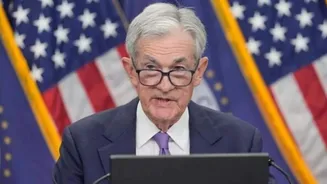Seventeen years ago, on Halloween night in 2008, an anonymous figure known as Satoshi Nakamoto quietly released the Bitcoin white paper. At the time, the global
economy was collapsing, banks were failing, and few paid attention to the nine-page document titled Bitcoin: A Peer-to-Peer Electronic Cash System. What looked like an obscure cryptography idea has since transformed into a multi-trillion-dollar financial revolution. Bitcoin’s journey from an experimental digital cash idea to what many now call “digital gold” has reshaped global finance. Institutions hold it, ETFs track it, and the asset has become a major player in portfolios worldwide. As of late 2025, Bitcoin trades above $100,000 and stands near a $2 trillion valuation, proving that Satoshi’s Halloween “trick” turned into one of the biggest “treats” in financial history. The first Bitcoin block , known as the genesis block , was mined on January 3, 2009. Since then, Bitcoin has evolved far beyond its early cypherpunk roots. It was originally designed to enable direct online payments without banks, reducing reliance on centralized financial systems. While that vision still drives Bitcoin believers, the asset today functions more like a store of value than everyday internet money. Institutions now dominate demand, with billions pouring into Bitcoin ETFs and regulated products, signaling deep integration with global markets. Bitcoin’s rise has also challenged traditional finance. Central banks, asset managers, and regulators now monitor crypto closely as it becomes interconnected with broader financial systems. Bank custody services, ETF participation, and cross-border capital movement show that Bitcoin is no longer operating outside the system , it is becoming part of it. Ironically, a technology designed to bypass banks has now forced banks to adapt. The timing of Bitcoin’s anniversary coincides with a major moment in global monetary policy. With the US Federal Reserve ending quantitative tightening on December 1, 2025, liquidity pressures may ease in the coming months. Historically, Bitcoin thrives when liquidity increases, and analysts expect volatility in the short term, with potential upside if interest-rate cuts or supportive financial conditions extend into early 2026. For now, Bitcoin trades in the $100,000–$115,000 range after pulling back from record highs near $125,000 in October. Despite its maturity, Bitcoin remains unpredictable. Its price still reacts strongly to macroeconomic shifts, investor sentiment, and policy signals. The next phase of Bitcoin’s growth depends on how global liquidity evolves, how institutions continue to accumulate, and how central banks balance inflation control with financial stability. If easing accelerates, analysts see potential for Bitcoin to revisit record highs and possibly target $150,000–$200,000 in 2026. If conditions tighten, Bitcoin may consolidate but stay firmly above six figures. "Bitcoin laid the foundation for what has now become a $4 trillion crypto asset class. Over the past 17 years, its journey has shown how blockchain technology can fundamentally reshape global finance. What began as an idea for decentralized money has evolved into a catalyst for innovation, from the tokenization of real-world assets to the use of stablecoins for seamless cross-border transactions. Every advancement in this space can trace its roots back to the vision outlined in the Bitcoin whitepaper," said Edul Patel, CEO of Mudrex. Seventeen years later, Bitcoin still carries the spirit of its origin , born out of crisis, fueled by distrust in traditional systems, and driven by a belief in financial independence. Once a digital outsider, it now stands at the crossroads of technology and global economics. Whether the coming years bring explosive growth or cautious consolidation, Bitcoin’s influence is undeniable. A Halloween-night idea has become one of the defining financial innovations of the modern era.

















